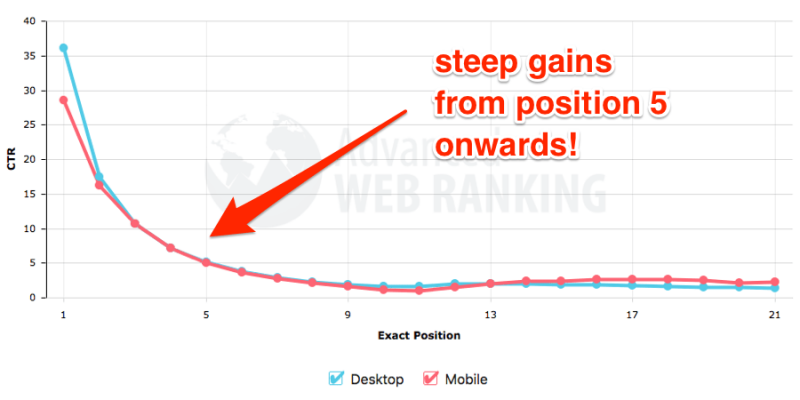SEO professionals conduct SEO audits regularly. These SEO audits help them identify areas where improvements can be made.
However, SEO audits have a tendency to become overwhelming. Depending on the state of your website, you may end up getting a lot of information, and you may not always know how to tackle it or from where to start first.
To help solve that problem for you, we have identified a list of 8 common SEO fixes that are quick, simple, and easy, but yield excellent benefits.
1. Meta title
The meta title is still one of the more aspects to focus in an SEO audit. And it is a very simple issue to identify and fix.
Apart from being an important place to put your main keyword in, the meta title also plays a big role in driving click-through rate from the SERPs. Better meta titles get a higher click-through rate, which effectively increases your organic traffic without any extra efforts.
Moreover, higher click-through rates also send positive signals to search engines that your web pages cater to search engines users more than other pages. This may help improve the search engine rankings of your site in the long run.
2. Meta descriptions
The same concept from above applies to meta descriptions as well. SEO issues related to meta description are very easy to identify and fix, but they can yield excellent results in the form of better search engine rankings for targeted keywords and higher click-through rates.
Common meta descriptions that you may find during an SEO audit are:
- Missing meta descriptions
- Meta descriptions that are too long that Google truncates — typically more than 155 characters.
- Meta descriptions that are too short
- Meta descriptions without relevant primary and secondary keywords
- Irrelevant meta descriptions with poor click-through rates.
We recommend being more strategic with meta descriptions as they allow you to add even more keywords — primary and secondary.
3. Website loading speed
The speed at which your website loads has become a major search engine ranking factor. Although fixing this issue may not be as simple as fixing some of the other issues (such as fixing meta titles and meta descriptions), the benefits of doing it are enormous.
Moreover, improvements to website loading speed benefit almost all web pages on the site.
Here are a few steps you can take to improve the loading speed of your website.
4. Keyword optimization
Keyword optimization is an integral part of improving web pages — especially after an SEO audit.
It is because a thorough SEO audit gives you perspective as well as detailed insights and information on how different competitor pages are performing, what keywords they are targeting and how, and which keywords you missed the last time.
We recommend shortlisting a bunch of primary and secondary keywords for each web page that you want to update. The next step would be to include those keywords in strategic hotspots on the web page, namely:
- The meta title of the page
- The meta description of the page
- H1, H2, and H3 tags
- Opening paragraph or the first 100 words
- Closing paragraph or the last 100 words
In addition, we will also recommend creating links to the target web page from other relevant pages on your site by using your primary and secondary keywords as the anchor text.
While it may take a bit more time, keyword optimization is a simple practice that can help boost rankings after an SEO audit.
5. Orphan pages
Large websites may have some siloed pages that are especially hard for search engine crawlers to find.
Orphan pages are pages that don’t have any link pointing to them. Because they are out of the “network”, they are harder to be found, indexed, and ranked.
The good news is that orphan pages are very easy to find and fix. And once search engine crawlers find them, these pages get ranked and may start bringing in organic traffic. It’s like utilizing an untapped source of additional traffic.
Here is a step-by-step tutorial on how to find orphan pages on your website using ScreamingFrog.
6. Crawl issues
Can the search engine crawlers find and crawl all the pages on your website?
Crawl issues can be sitewide (server errors, DNS errors, robots.txt failure) or URL errors (that are related to specific pages on a website).
There could be many reasons for crawl errors. Some of the common reasons are:
- Sitemap errors
- Incorrect temporary or permanent redirects
- Server-related problems
- Outdated or incorrect URLs
- 403 status codes — denied access
- Pages blocked by robots.txt
- NoFollow links
Fixing many of these crawl issues can be relatively simple. For example, making small tweaks to the robots.txt file, removing nofollow links, and fixing outdated URLs shouldn’t take long.
Even if you do not have a premium SEO tool, you can identify and fix many crawl issues by using Google Search Console. Here is a simple guide on how to fix crawl issues with Google Search Console.
7. Updating older content
SEO audits usually trigger robust content update programs. Such programs need you to identify web pages with high potential. Once these pages are updated, you expect them to rank higher for relevant keywords and get more organic traffic.
Updating older content may require a lot of time and effort. Therefore, it is better to be strategic — especially when it comes to choosing the right pages to update.
We recommend prioritizing the following two types of pages:
- Web pages with high business value, e.g., product pages, the home page of the website, pages with high conversion rates, etc.
- Web pages that already rank on Google’s first page between positions 5 and 10.
It is common knowledge that the top 4 pages get the most clicks on the search engine results pages.
Advanced Web Ranking conducted a case study that highlights steep gains from position 5 onwards in the SERPs.

By specifically focusing on web pages that are already ranking on the first spot and pushing them into the top 4 positions, you can get the maximum SEO benefits with relatively minimum efforts.
8. Broken links
Broken links are easy to identify and easy to fix.
It is important to remember that Google wants your website visitors to have a good user experience. Regardless of how informative your content might be, if your site offers a poor user experience, Google may not prefer it over other results.
Broken URLs represent the exact opposite of a good user experience.
Identify all external and internal pages with the status code of 404 (broken links) and replace the links with active pages.
Conclusion
SEO audits can be overwhelming and have a tendency to throw lots of information at you simultaneously. Pick your battles, be strategic, and identify low-effort fixes that can result in proportionately higher SEO benefits.
The list we have curated in this article highlights 8 such areas.
If you have any questions, let us know in the comment section below.
